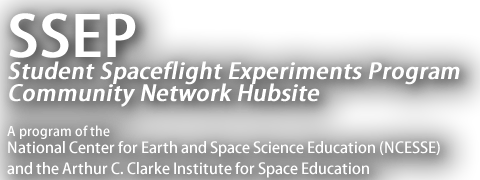This page provides a video archive of presentations at the annual SSEP National Conference by student researchers whose experiments were part of the SSEP Mission 17 to ISS Orbiter experiments payload. Mission 17 to ISS was the nineteenth SSEP flight opportunity.
Orbiter launched on SpaceX-29, on November 9, 2023, from NASA Kennedy Space Center, Florida. Orbiter returned to Earth on SpaceX-29, splashing down in the Gulf of Mexico off the west coast of Florida on December 22, 2023.
For details on the flight profile for Orbiter, see the SSEP Mission 17 to the International Space Station (ISS) page.
Some student flight teams present at more than one annual conference, reporting out status at various stages of the life cycle of a flight experiment. It is also true that not all student flight teams attend a conference. For details on all Orbiter flight experiments, see the Selected Experiments on SSEP Mission 17 to ISS page.
Glendora, California
Title: Production of Mushroom Leather in Microgravity
Oral Presentation, 10th Annual SSEP National Conference, July 2024
Glendora High School, Glendora Unified School District
Grade levels: 11-12
Type of Experiment: Flight Experiment, Mission 17
Co-Principal Investigators: Tyler Lai, Benjamin Tallman
Investigator: Dylan Anderson
Collaborator: Justin Tong
Teacher Facilitator: Jimmy Liao
Abstract: The experiment tested the viability of producing mushroom leather in space through the biomass processing method. Ganoderma Lucidum mushrooms were prepared in a liquid culture and placed into a mini-lab. The clamp was removed on A=0 and shaking of the mini-lab occurred for 120 seconds on A=0, A+2, U-14, U-5 and U-2. Analysis was done under 400x magnification using a light microscope. The experiment concluded mushroom leather could be produced in space through the biomass processing method.
Ocala, Florida
Title: Does Microgravity Affect Protein Production of Escherichia coli?
Oral Presentation, 10th Annual SSEP National Conference, July 2024
Dr. N.H. Jones Elementary School and North Marion High School, Marion County Public Schools
Grade level: 7
Type of Experiment: Flight Experiment, Mission 17
Principal Investigator: Collins Sheldon
Teacher Facilitator: Lisa Dorsey
Abstract: The experiment tested growth of Escherichia coli in microgravity compared to the Earth ground truth. Bacto beads were activated with the addition of nutrient broth at U-5 and allowed to grow until U-2 when Lyophilized Lysozyme and Tris EDTA solution were added to stop growth of E. coli and protein production. Upon return to Earth, a nanometer was used to test protein levels in the microgravity and ground truth samples. Results showed more protein was produced in the ground truth sample.
Burleson, Texas
Title: Can a Cotton Ball Instead of Soil Germinate a Lavender Seed in Microgravity?
Oral Presentation, 10th Annual SSEP National Conference, July 2024
Nick Kerr Middle School, Burleson Independent School District
Grade level: 6
Type of Experiment: Flight Experiment, Mission 17
Co-Principal Investigators: Abigail Bain, Jack Crow, Lyla Meek, Addison White
Teacher Facilitator: Terry Briggs
Abstract: This investigation will explore how lavender seeds germinate in microgravity without using soil. An alternative growing method is needed to reduce the total mass of the growing process because more mass equals more financial resources used during space exploration. The investigation is beneficial because quality plant growth during space exploration will provide a viable natural health source in the future. Additionally, in the world of privatized space travel, cost will be sufficiently higher based on fuel expenses.
